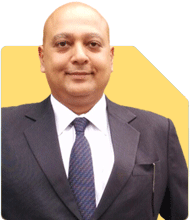Can I Sell My Leased Land Before Lease Expires?
T S Khurana | Answer |Ask -Follow
Tax Expert - Answered on Oct 05, 2024
Since the last 21 years, he has also been providing expert advice on financial matters, including investments and diversification of funds, and wealth building in the long term to his clients.
He believes that investment in real estate is the safest way for better returns and wealth generation over a period of time.
A former chairman of the Chandigarh Chapter of Institute of Cost Accountants of India, T S Khurana has also served as member of its technical committee.... more

Sir, A person (landowner) land leased to another person (tenant) leased period from 2010 to 2030.but tenant leased land construction building year:2015 and landowner selling of leased land along with construction building to another person year 2024. Tenant leased period due for 6 years Question: Above mentioned selling transaction capital gains tax applicable for landowner or tenant in it act
02. In case of Tenant (lease holder) Tax Liability shall be, of the total amount he receives, either from Landowner or sub-lease holder minus his cost, what ever it is.
03. This situation has many legal issues, Like Whether Tenant was authorized to Sub-lease the property & that to for construction purpose, without any written approval from the landowner .
Legal status of the tenant is also questionable, if he does not had the authority to sub-lease the property. Lease agreement may stand terminated, if the tenant does not full fill its conditions. These aspects need a legal opinion. However, tax ability shall remain on the basis of above 2 points only.
Most welcome for any further clarifications. Thanks.
You may like to see similar questions and answers below
Sanjeev Govila |458 Answers |Ask -Follow
Financial Planner - Answered on Feb 08, 2023
Mihir Tanna | Answer |Ask -Follow
Tax Expert - Answered on Mar 01, 2023
Milind Vadjikar |951 Answers |Ask -Follow
Insurance, Stocks, MF, PF Expert - Answered on Sep 24, 2024
T S Khurana | Answer |Ask -Follow
Tax Expert - Answered on Oct 05, 2024
Rajesh Kumar Singh |47 Answers |Ask -Follow
IIT-JEE, GATE Expert - Answered on Feb 01, 2025
Dr Nagarajan Jsk |224 Answers |Ask -Follow
NEET, Medical, Pharmacy Careers - Answered on Feb 01, 2025
Dr Nagarajan Jsk |224 Answers |Ask -Follow
NEET, Medical, Pharmacy Careers - Answered on Feb 01, 2025
Radheshyam Zanwar |1168 Answers |Ask -Follow
MHT-CET, IIT-JEE, NEET-UG Expert - Answered on Feb 01, 2025
Sushil Sukhwani |576 Answers |Ask -Follow
Study Abroad Expert - Answered on Feb 01, 2025
Sushil Sukhwani |576 Answers |Ask -Follow
Study Abroad Expert - Answered on Feb 01, 2025
Sushil Sukhwani |576 Answers |Ask -Follow
Study Abroad Expert - Answered on Feb 01, 2025
Anil Rego |384 Answers |Ask -Follow
Financial Planner - Answered on Feb 01, 2025
Anil Rego |384 Answers |Ask -Follow
Financial Planner - Answered on Feb 01, 2025
Anil Rego |384 Answers |Ask -Follow
Financial Planner - Answered on Feb 01, 2025


























